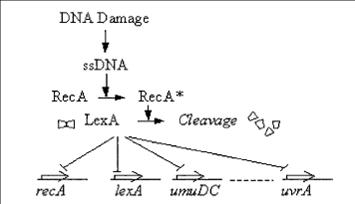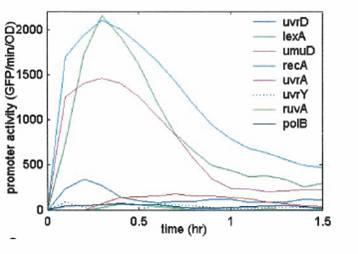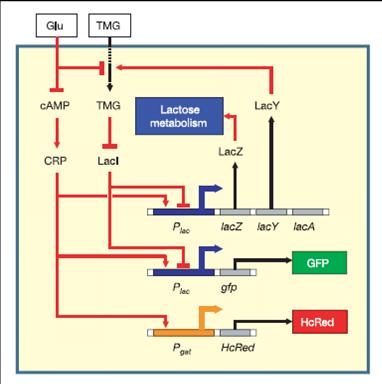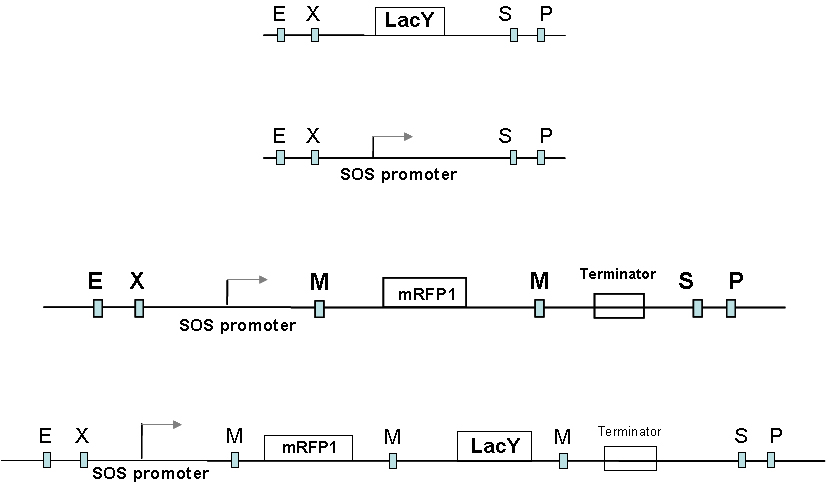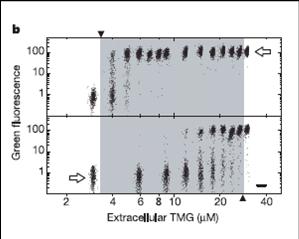Memory effects of UV exposure
From 2006.igem.org
(→Constructs) |
|||
| Line 47: | Line 47: | ||
| - | [[Image:parts group3.jpg |thumb|left]] | + | [[Image:parts group3.jpg |250 px|thumb|left]] |
| - | + | ||
| - | + | ||
| - | + | ||
| - | + | ||
| - | + | ||
| - | + | ||
| - | + | ||
| - | + | ||
| - | + | ||
| - | + | ||
| - | + | ||
| - | + | ||
| - | + | ||
| - | + | ||
===Testing Bisability in UV-switch strain=== | ===Testing Bisability in UV-switch strain=== | ||
Revision as of 05:01, 31 October 2006
Contents |
Group III
Aim
We are interested in converting a transient UV exposure into a persistant response. We plan to achieve this by coupling UV response system to a bistable network. Such system can be used to monitor cells that have undergone UV damage.
Approach
So what is this UV damage response and why long term monitoring?
The SOS response
The SOS genetic network consists of various genes that perform diverse functions in response to DNA Damage NER (Nucleotide Excision Repair) Translesion DNA replication Homologous recombination Cell division arrest
RecA acts as a sensor of DNA Damage RecA gets activated and mediates LexA auto-cleavage
Transient response induced in response to DNA damage. The promoter activity increases rapidly in the first few minutes and decrease within an hour.
Thus, long time monitoring of DNA Damage induced by UV Irradiation requires that this transient signal generated is stabilized.
So, we tried to couple this transient signal to a bistable network to enable long time monitoring of DNA Damage.
We have used the lac regulatory network as the bistable network.
Constructs
Here comes the exciting stuff, the synthetic biology part! We have made the following parts
Testing Bisability in UV-switch strain
The regulatory network involved in uptake and utilization of lactose exhibits bistability over a range environmental conditions [Ozbudak et al., 2004]. This has been demonstrated in an E.coli strain Muk21 that has chromosomal integration of GFP expressed under lac promoter.
A bistable network is hysteretic. Environmental history determines state of the network at intermediate inducer concentration.
This is a scatter plot of cells. Cells with uninduced (lower panel) or induced (upper panel) history are grown in different TMG concentrations.
We transformed Muk21 with our UV-switch construct to test hysteresis which is a characteristic behavior of a bistable network.
